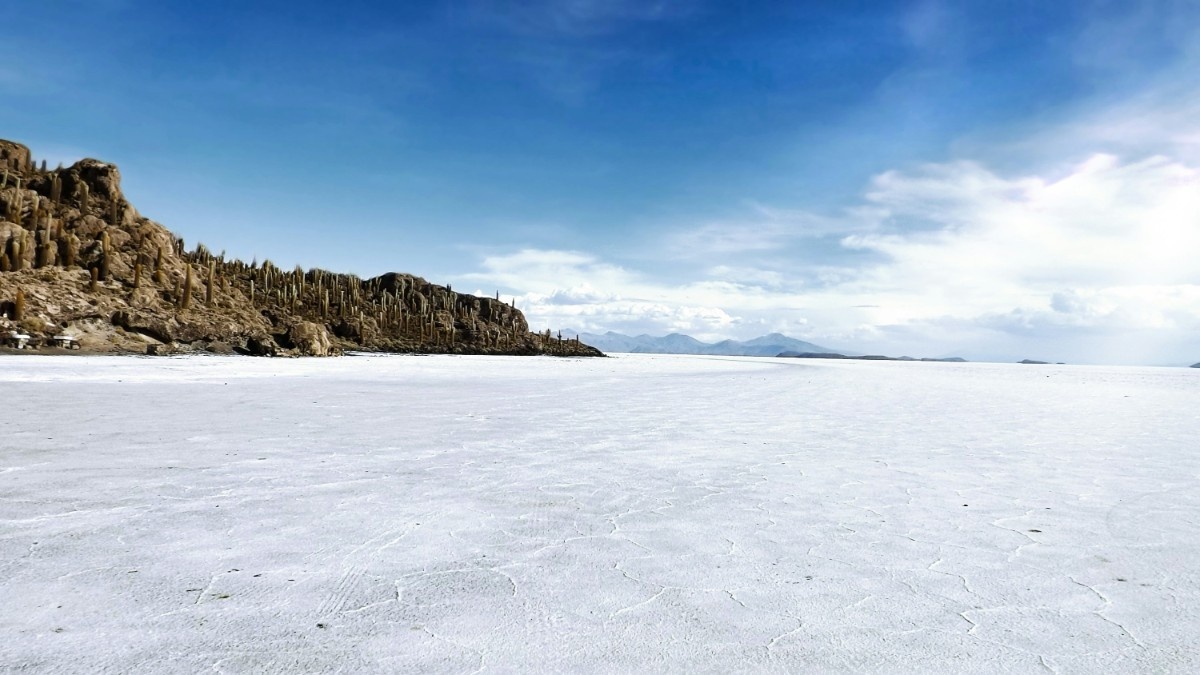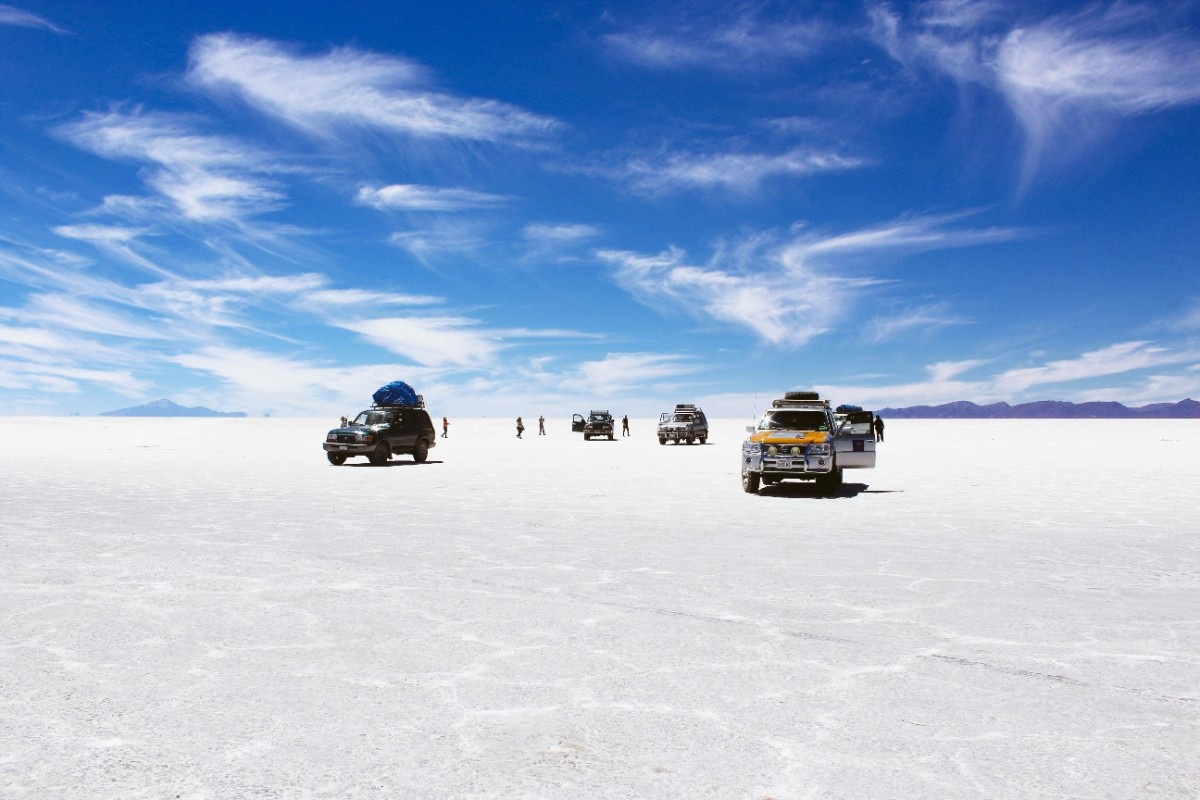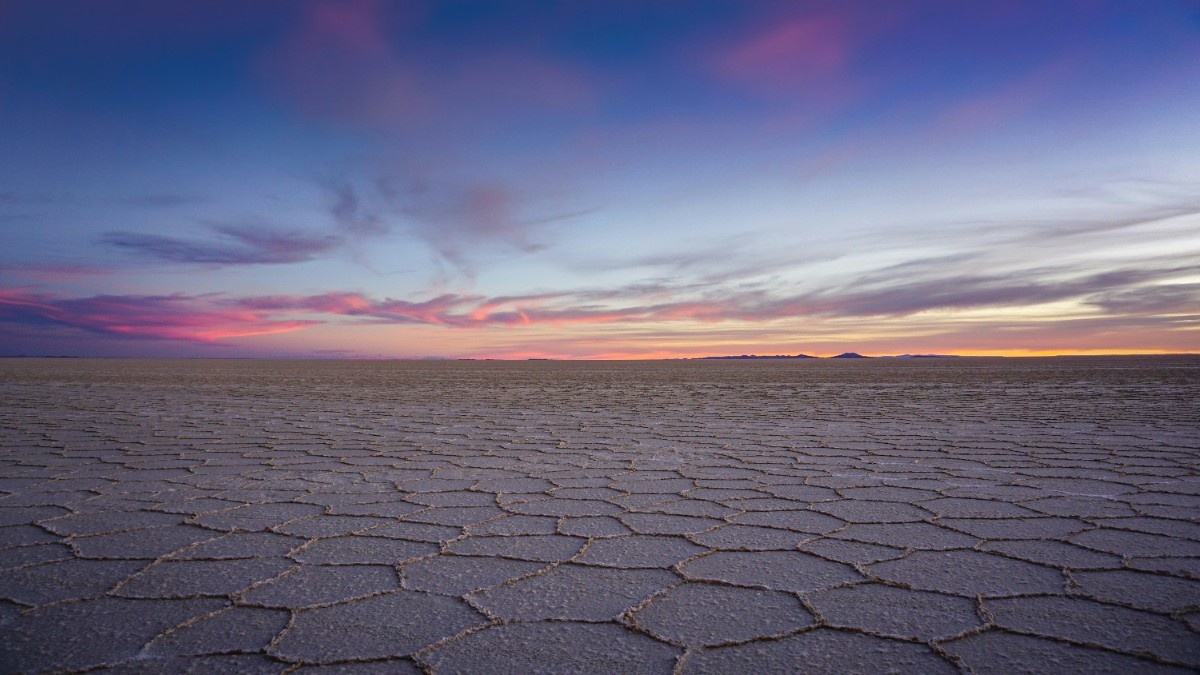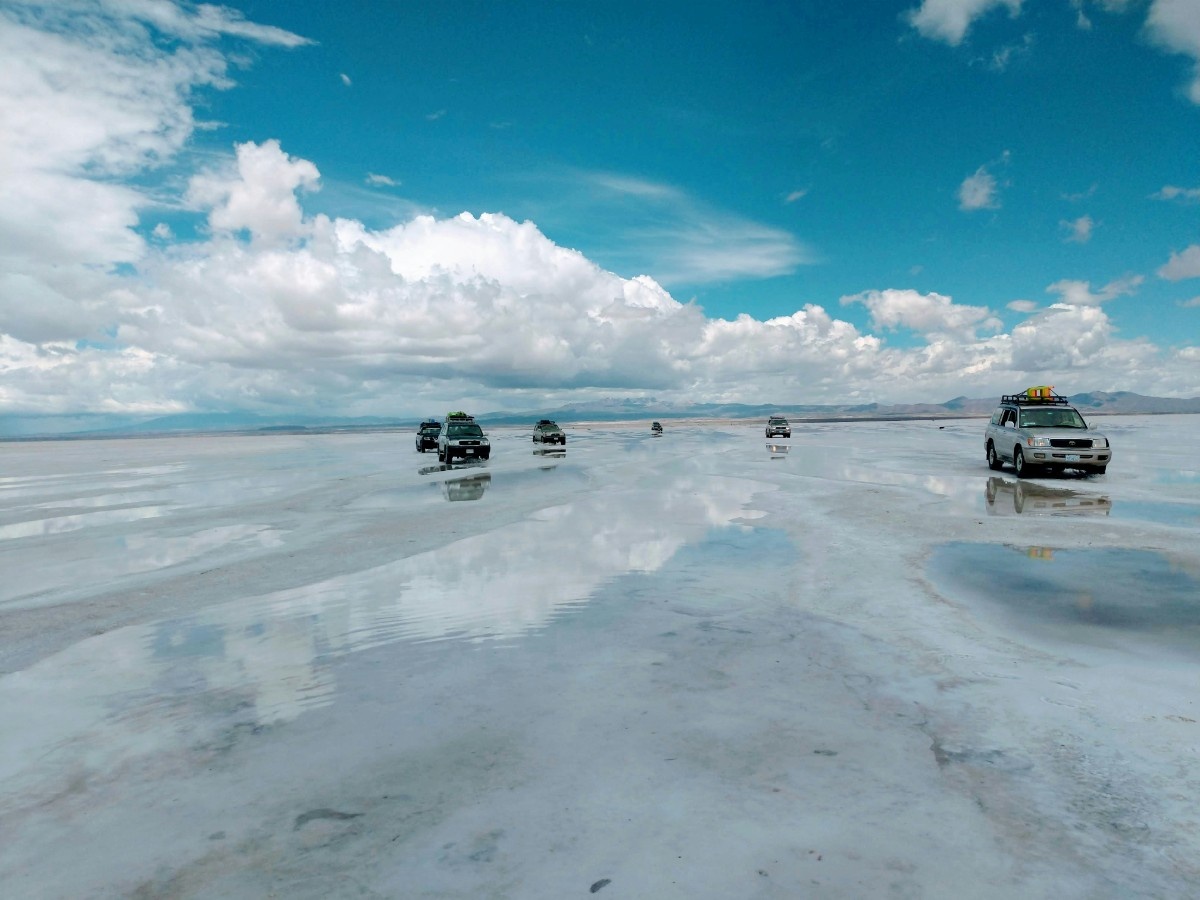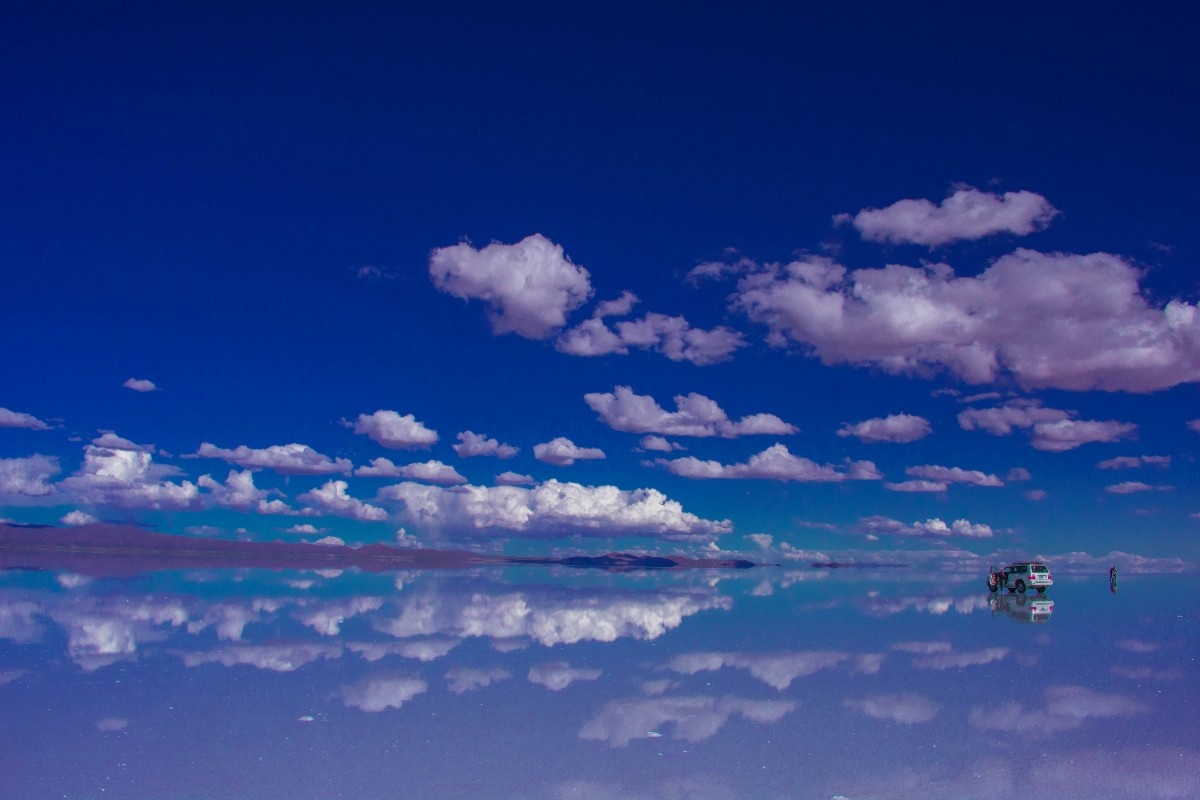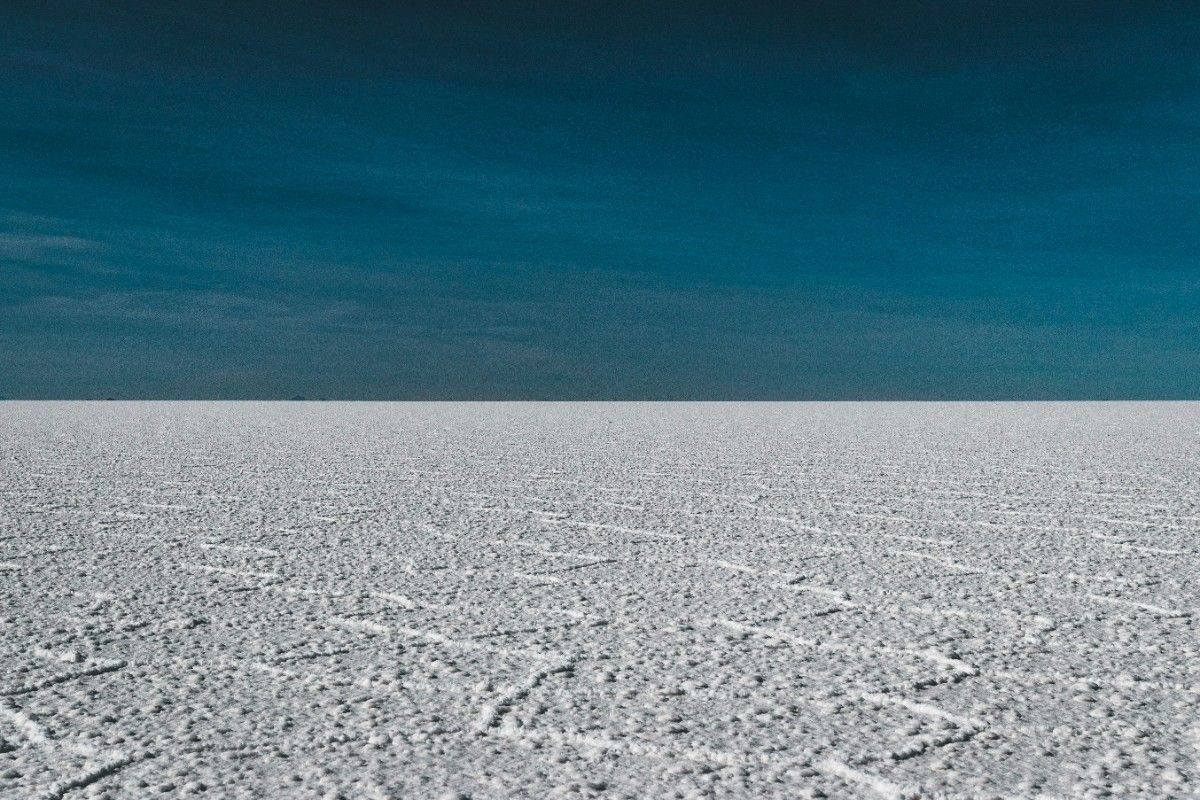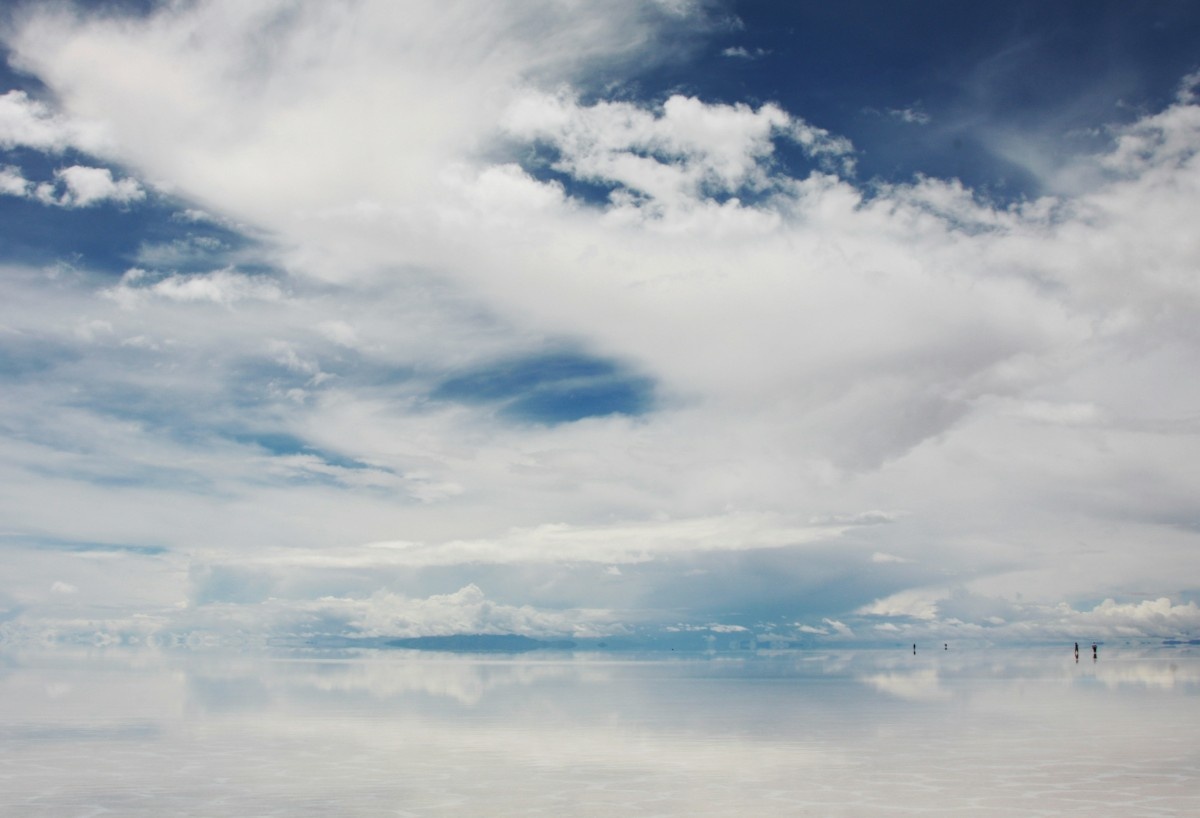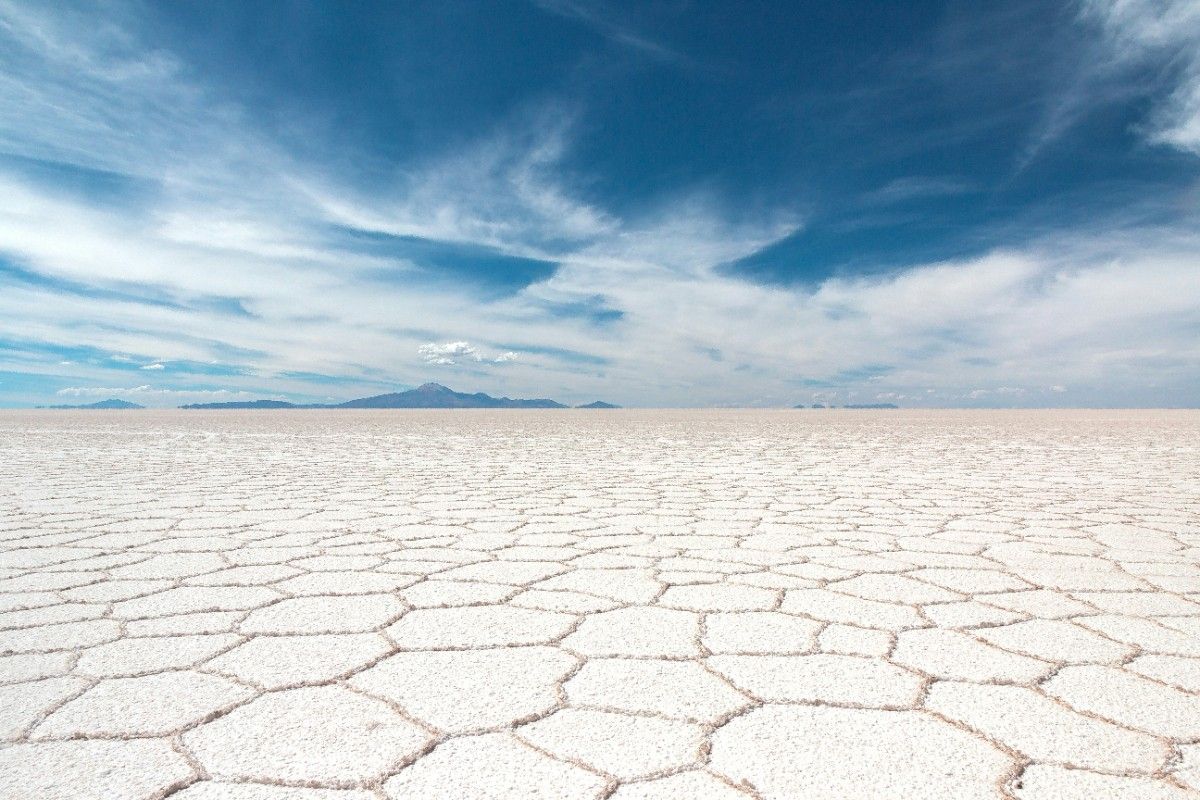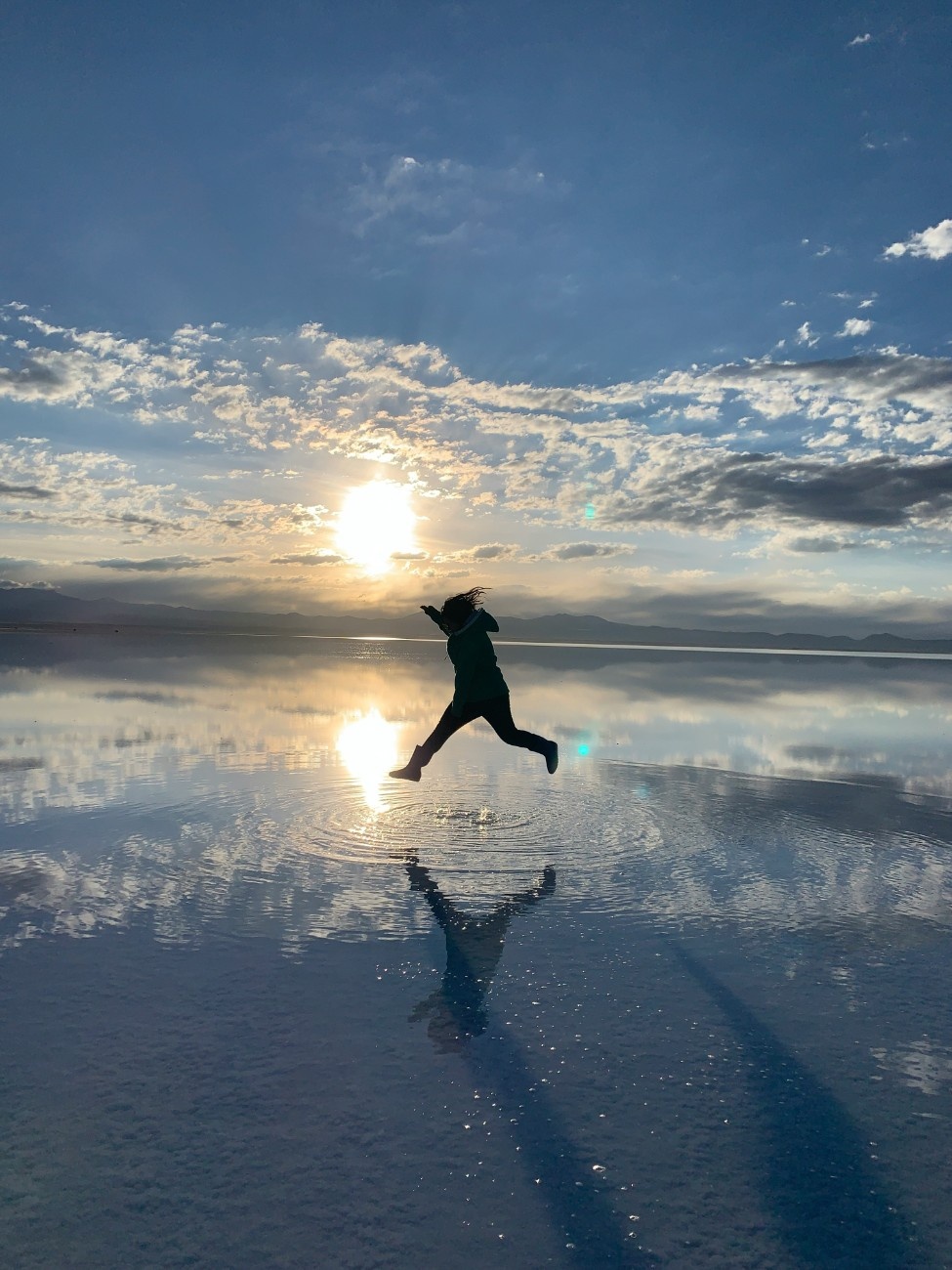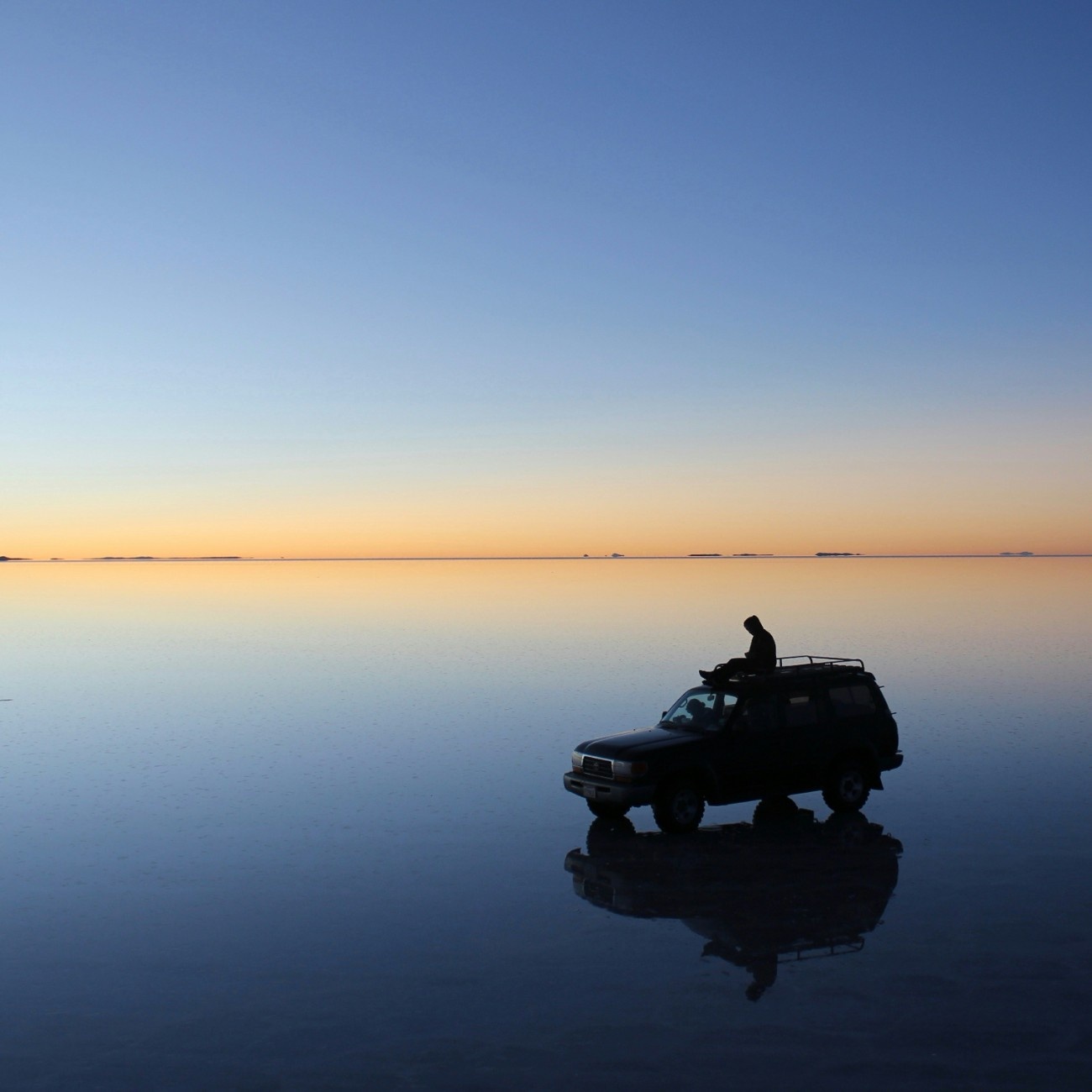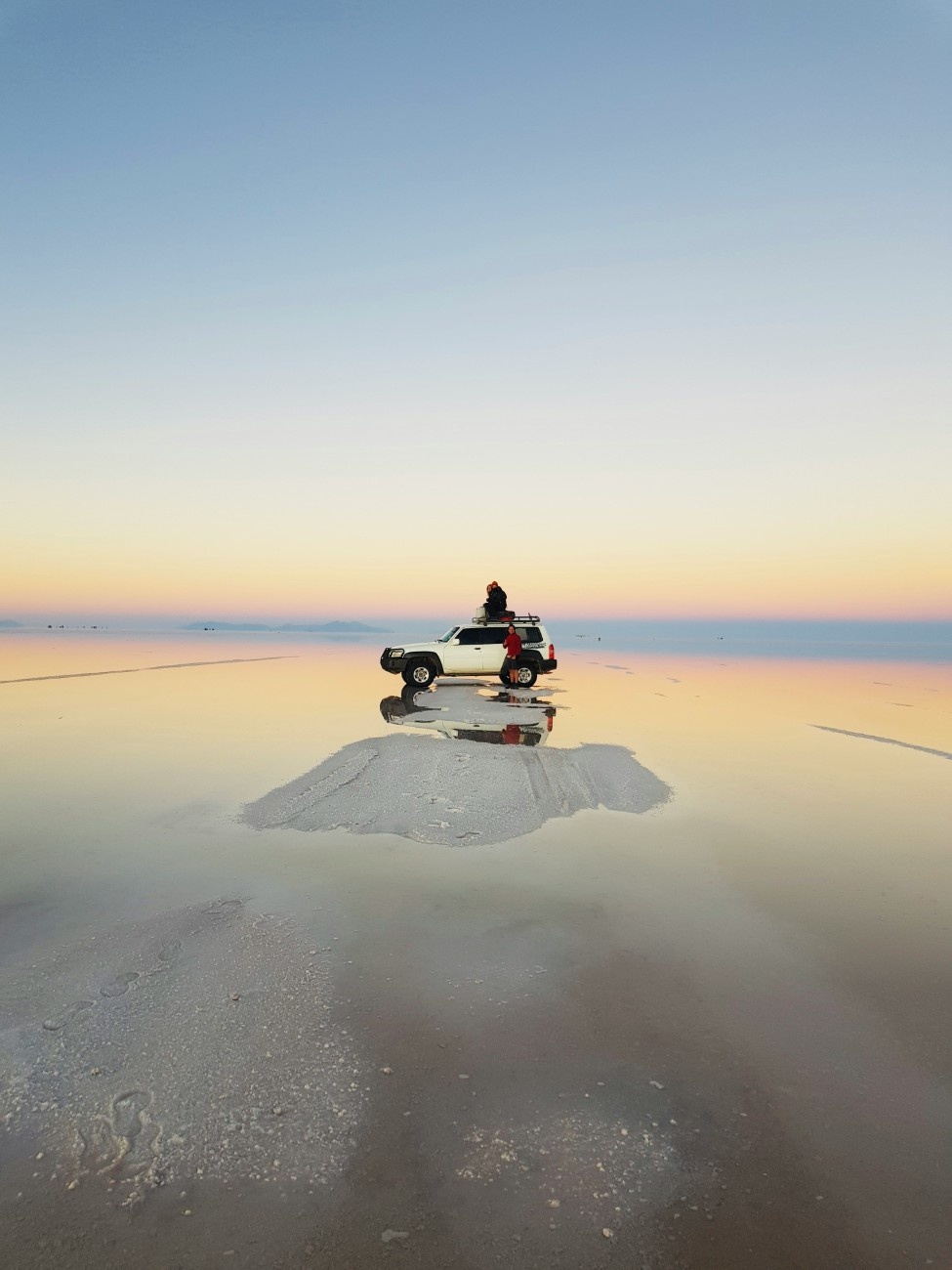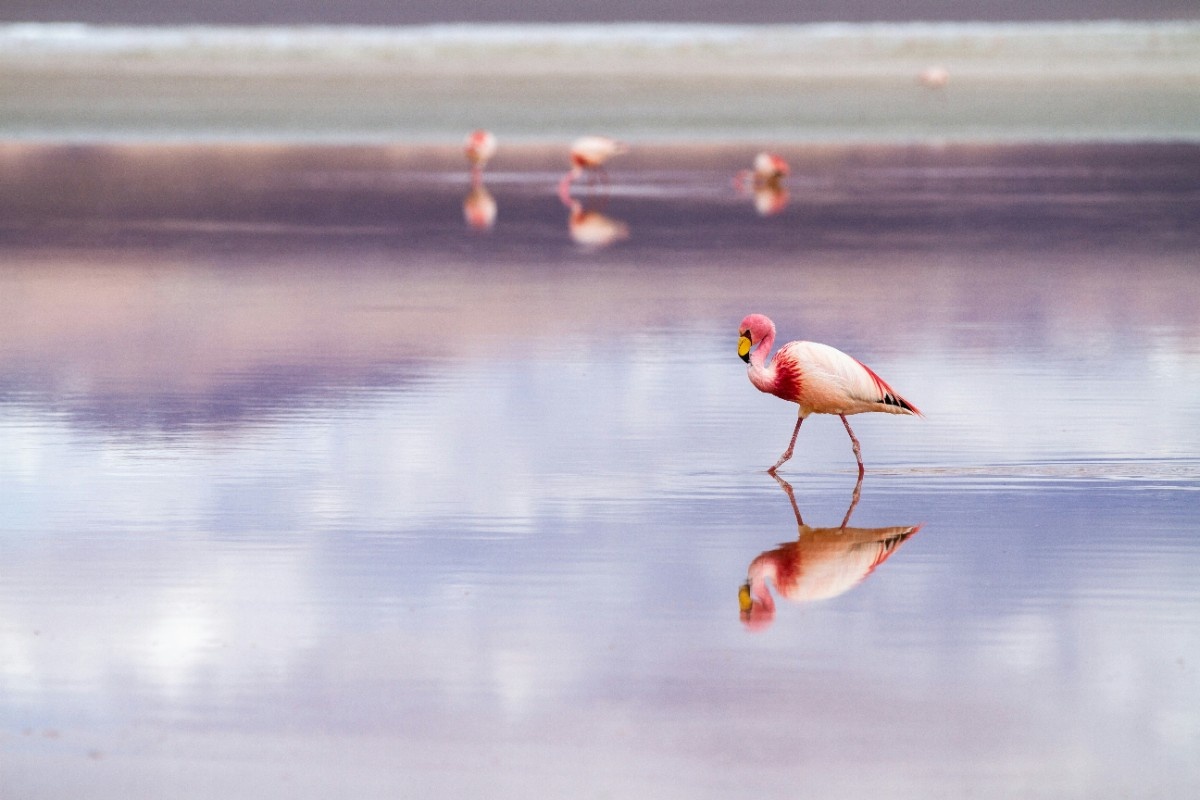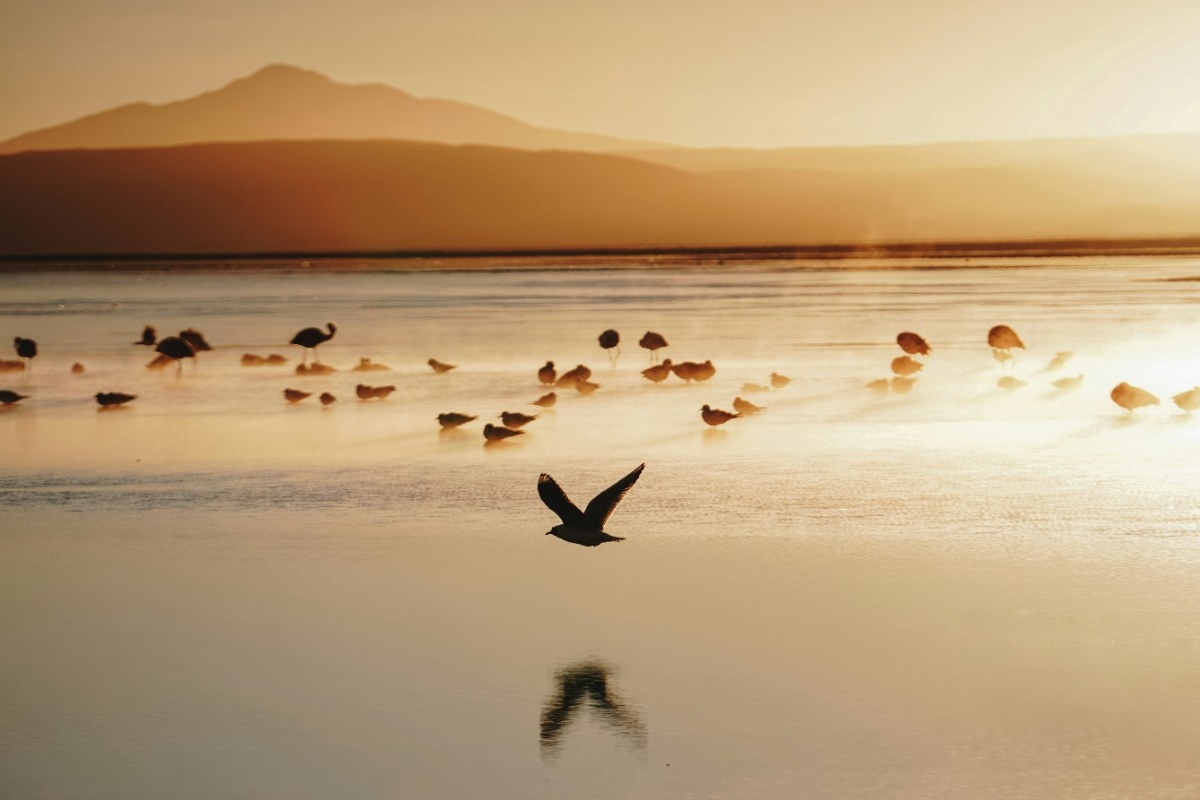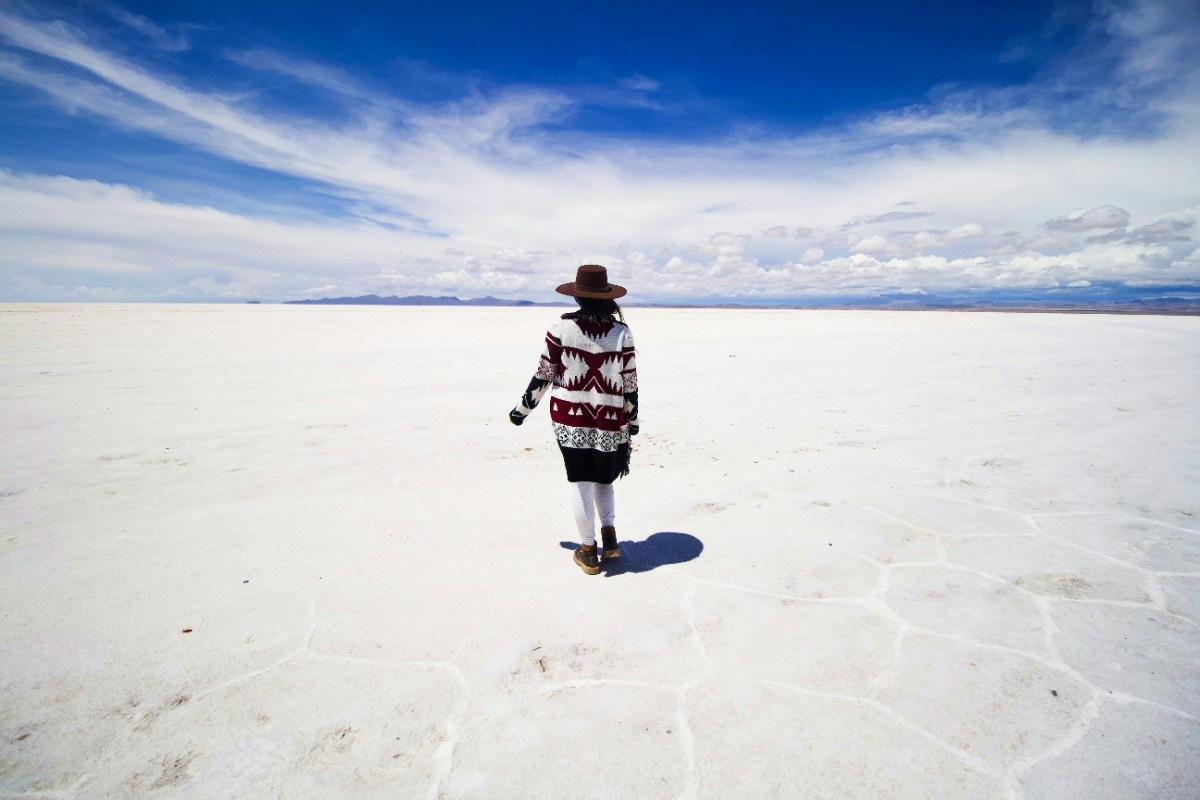Introduction to Salar de Uyuni
Overview of Salar de Uyuni
Salar de Uyuni, located in the heart of Bolivia, is an awe-inspiring natural wonder that captivates visitors from around the world. This expansive salt flat covers an area of over 10,000 square kilometres, making it the largest of its kind on Earth. The Salar de Uyuni is situated at an altitude of 3,656 meters above sea level, nestled within the Andes Mountains in the department of Potosí. The sheer scale and surreal beauty of this landscape have earned it a well-deserved reputation as one of South America's most extraordinary destinations.
The salt flats of Bolivia were formed as a result of transformations between several prehistoric lakes. The present-day Salar de Uyuni is a remnant of the ancient Lake Minchin, which once covered much of the region. Over time, the lake dried up, leaving behind a thick crust of salt that now forms the iconic white expanse of the Uyuni salt flats. The salt crust varies in thickness, ranging from a few centimetres to several meters, and is extraordinarily rich in lithium, a valuable mineral used in the production of batteries and other high-tech applications.
Geology and Ecosystem
The Salar de Uyuni is not only a geological marvel but also a crucial ecosystem that supports a diverse array of flora and fauna. The salt flats are home to numerous microorganisms, such as algae and bacteria, which have adapted to thrive in this extreme environment. These microorganisms play a vital role in sustaining the unique ecology of the area.
One of the most notable inhabitants of the Salar de Uyuni is the James's flamingo, a species native to the region. These elegant birds can be found feeding on the microscopic organisms that flourish in the mineral-rich waters of the salt flats. The area also provides a habitat for other distinctive wildlife, including the Andean fox and the fascinating viscacha, a small rodent resembling a rabbit with a long tail.
Climate and Seasons
The climate in the Salar de Uyuni region is harsh and unpredictable, with extreme temperature fluctuations between day and night. The area experiences a cold, arid climate with average temperatures ranging from -9°C to 21°C. The best time to visit Bolivia salt flats is during the dry season, which typically runs from May to November. During this period, the salt crust is at its thickest and most stable, allowing for easier exploration of the vast expanse.
However, the rainy season, lasting from December to April, offers a different and equally mesmerising experience. During this time, a thin layer of water covers the salt flats, transforming the landscape into an immense mirror that reflects the sky above. This phenomenon, known as the "mirror effect," creates an otherworldly atmosphere and provides photographers with an opportunity to capture truly unique and breathtaking images of the salt flats in Bolivia.
Exploring Salar de Uyuni
Getting to Salar de Uyuni
Visiting the Salar de Uyuni requires some planning, as the region is remote and access can be challenging. The nearest town to the salt flats is Uyuni, which serves as the main gateway for tourists. To reach Uyuni, visitors can take a flight from major cities in Bolivia, such as La Paz or Santa Cruz, to the small Uyuni airport. Alternatively, there are bus services available from various cities, although the journey can be lengthy and arduous due to the rough terrain and high altitude.
Once in Uyuni, visitors can book tours or rent vehicles to explore the salt flats of Bolivia. It is essential to choose a reputable tour operator or ensure that you have a well-maintained vehicle suitable for the harsh conditions of the salt flats. Many visitors opt for guided tours, which typically include transportation, meals, and accommodation, as well as the expertise of local guides who can share their knowledge of the area's history, geology, and ecology.
Traversing the Salt Flats
Exploring the vast expanse of the Salar de Uyuni is an unforgettable experience that offers a unique perspective on the raw beauty of the natural world. Visitors can traverse the salt flats on foot, taking in the surreal landscape and marvelling at the endless white horizon stretching out before them. The salt crust is generally thick and stable, making it possible to walk on the surface without sinking.
For those who prefer a more immersive experience, it is possible to venture onto the salt flats in a vehicle. Driving on the Salar de Uyuni is an adventure in itself, as the vast, flat surface creates an illusion of boundlessness. However, it is crucial to exercise caution and follow the guidance of experienced drivers or guides, as the salt can be deceptively treacherous, with hidden pockets of soft mud or water that can pose a danger to vehicles.
Photographing the Salar de Uyuni
The Salar de Uyuni is a photographer's paradise, offering endless opportunities to capture the beauty and wonder of this unique landscape. The expansive white surface of the salt flats creates a blank canvas that lends itself to creative and imaginative photography. Visitors can experiment with perspective, creating optical illusions that play with scale and depth, such as the famous "toy car" effect, where people appear to be standing next to miniature vehicles.
During the rainy season, the mirror effect of the salt flats provides an even more captivating subject for photography. The thin layer of water covering the surface perfectly reflects the sky above, creating a dreamlike and surreal atmosphere. Photographers can capture stunning images of the endless horizon, where the sky and the earth seem to merge into one.
The Salar de Uyuni also offers breathtaking opportunities for night sky photography. The remote location and absence of light pollution make it an ideal spot for capturing the stars and the Milky Way in all their glory. The dark skies above the salt flats provide a spectacular backdrop for astrophotography, allowing photographers to create truly otherworldly images.
Wildlife and Surrounding Attractions
While the salt flats themselves are the main attraction, the Salar de Uyuni region is also home to a diverse array of wildlife and other natural wonders. Visitors can spot the iconic James's flamingo, as well as other bird species such as the Andean goose and the Andean Gull. The surrounding high-altitude desert is also home to unique mammals like the Andean fox and the viscacha.
Beyond the salt flats, there are several other attractions in the area that are well worth exploring. The Incahuasi Island, located in the middle of the Salar de Uyuni, is a rocky outcrop covered in giant cacti, some of which are over 1,000 years old. Visitors can hike to the top of the island for panoramic views of the surrounding salt flats.
Another popular destination is the Tunupa Volcano, which looms over the salt flats and offers a stunning backdrop for photographs. The volcano is considered sacred by the local indigenous communities and is steeped in mythology and legend. Visitors can hike to the base of the volcano or take a guided tour to learn more about its cultural and historical significance.
The Salar de Uyuni region is also dotted with colourful lagoons, such as the Laguna Colorada, which is known for its striking red hue caused by the presence of algae and minerals in the water. The lagoon is home to large flocks of flamingos, making it a popular spot for birdwatchers and nature enthusiasts.
The Unique Geology of Salar de Uyuni
Formation of the Salt Flats
The Salar de Uyuni, situated in the heart of Bolivia, is an extraordinary geological wonder that has captivated scientists and visitors alike. The formation of this vast salt flat is a testament to the complex processes that have shaped the Earth's surface over millions of years. The Uyuni salt flats are located in the Altiplano, a high-altitude plateau in the Andes Mountains, which stretches across parts of Bolivia, Peru, and Chile.
The genesis of the Salar de Uyuni can be traced back to the Pleistocene epoch, which lasted from about 2.6 million to 11,700 years ago. During this time, the Altiplano was covered by a series of large, ancient lakes, including the massive Lake Minchin. These lakes were fed by glacial meltwater and precipitation, which gradually accumulated in the basin over thousands of years.
As the climate shifted and became drier, the lakes began to evaporate, leaving behind thick layers of salt and other minerals. The Salar de Uyuni, which covers an area of over 10,000 square kilometres, is the largest remnant of these ancient lakes. The salt crust that forms the surface of the Uyuni salt flats is composed primarily of sodium chloride, but also contains traces of other minerals such as lithium, magnesium, and potassium.
Salt Crust and Brines
One of the most striking features of the Salar de Uyuni is the expansive salt crust that stretches out in all directions, creating an otherworldly landscape. The salt crust is not uniform in thickness, varying from a few centimetres to several meters deep. The surface of the salt flat is polygonal in shape, with a network of cracks and fissures that form intricate geometric patterns.
Beneath the salt crust lies a rich brine that is heavily laden with minerals. This brine is a key component of the Salar de Uyuni's unique ecosystem, supporting a variety of adapted microorganisms such as bacteria, algae, and archaea. These microorganisms play a vital role in the biogeochemical cycles of the salt flat, contributing to the cycling of nutrients and energy within the system.
The brines of the Salar de Uyuni are also of great economic importance, as they contain significant reserves of lithium, a critical component in the production of batteries for electric vehicles and other high-tech applications. Bolivia is estimated to hold over 50% of the world's lithium reserves, with the majority concentrated in the Salar de Uyuni.
Geothermal Activity and Volcanoes
The Salar de Uyuni region is characterised by significant geothermal activity, with numerous hot springs, geysers, and fumaroles dotting the landscape. These geothermal features are a result of the high heat flow in the area, which is generated by the tectonic activity of the Andes Mountains.
The geothermal activity in the Salar de Uyuni region also influences the chemistry of the brines and the salt crust. Hot springs and geysers can inject mineral-rich water into the salt flat, altering the composition of the brines and contributing to the formation of unique mineral deposits.
Surrounding the Salar de Uyuni are several volcanoes, including the dormant Tunupa Volcano, which looms over the salt flats at an elevation of 5,321 meters. These volcanoes are part of the Central Volcanic Zone of the Andes, which is one of the most volcanically active regions in the world. The presence of these volcanoes adds to the geological complexity of the area and contributes to the unique mineralogy of the salt flats.
The History and Culture of Salar de Uyuni
Ancient Civilisations and the Uyuni Region
The Salar de Uyuni and its surrounding region have been inhabited by humans for thousands of years, with evidence of human settlement dating back to prehistoric times. The ancient civilisations that lived in the area were well-adapted to the harsh, high-altitude environment of the Altiplano and developed unique cultural practices and beliefs that were closely tied to the landscape.
One of the most significant ancient civilisations to inhabit the region was the Tiwanaku culture, which emerged around 1500 BCE and reached its peak between 500 and 1000 CE. The Tiwanaku people were skilled farmers and engineers who constructed impressive stone structures and developed sophisticated agricultural techniques, such as raised field systems, to cultivate crops in the challenging environment of the Altiplano.
The Tiwanaku civilisation was followed by the Aymara people, who continue to inhabit the region to this day. The Aymara have a rich cultural heritage that is deeply intertwined with the landscape of the Salar de Uyuni. They believe that the salt flat is a sacred place and have developed a complex system of beliefs and rituals that are centred around the cycle of life, death, and rebirth.
Colonial Era and the Rise of Mining
The arrival of the Spanish in the 16th century marked a significant turning point in the history of the Salar de Uyuni region. The Spanish were drawn to the area by the promise of mineral wealth, particularly silver, which was abundant in the surrounding mountains. The colonial era saw the rise of mining as the dominant economic activity in the region, with the establishment of numerous mines and mining towns.
The mining industry had a profound impact on the indigenous populations of the area, who were often forced to work in the mines under harsh conditions. The Spanish also introduced new technologies and techniques for mining, which allowed them to extract greater quantities of silver and other minerals from the earth.
The legacy of the colonial era can still be seen in the Salar de Uyuni region today, with many of the towns and villages in the area bearing the names of saints and other religious figures from the Spanish colonial period. The mining industry also continues to play a significant role in the local economy, although the focus has shifted from silver to other minerals such as lithium.
Modern Era and Tourism
In recent years, the Salar de Uyuni has become an increasingly popular tourist destination, attracting visitors from around the world who come to marvel at the stunning beauty of the salt flats. Tourism has become a major driver of the local economy, with many communities in the area benefiting from the influx of visitors.
The development of tourism in the Salar de Uyuni region has not been without its challenges, however. There are concerns about the impact of tourism on the delicate ecosystem of the salt flats, as well as the potential for cultural disruption and the displacement of local communities.
Efforts are being made to promote sustainable tourism practices in the region, with a focus on minimising the environmental impact of tourism and ensuring that the benefits of tourism are shared equitably among local communities. This includes initiatives such as eco-lodges, which are designed to have minimal impact on the environment, and community-based tourism projects that allow visitors to experience the local culture and way of life in a respectful and sustainable manner.
Cultural Significance and Indigenous Communities
For the indigenous communities that inhabit the Salar de Uyuni region, the salt flats are more than just a natural wonder – they are a sacred place that is deeply woven into the fabric of their culture and identity. The Aymara people, in particular, have a strong spiritual connection to the landscape, and the salt flats play a central role in many of their cultural traditions and beliefs.
The Aymara believe that the Salar de Uyuni is the birthplace of the gods and the centre of the universe. They see the salt flats as a bridge between the physical world and the spiritual realm, and they perform a variety of rituals and ceremonies on the salt flats to honour their ancestors and maintain their connection to the land.
One of the most important Aymara festivals is the Festival of the Cruz de Uyuni, which takes place every year in May. During the festival, thousands of pilgrims from across the region come to the Salar de Uyuni to celebrate the life-giving power of the salt flats and to offer prayers and sacrifices to the gods.
The cultural significance of the Salar de Uyuni for indigenous communities underscores the importance of protecting and preserving this unique landscape for future generations. Efforts are being made to promote greater understanding and respect for indigenous cultures and traditions in the region, and to ensure that the rights and interests of indigenous communities are taken into account in the development of tourism and other economic activities in the area.
The Stunning Landscapes of Salar de Uyuni
The Endless White Expanse
The Salar de Uyuni is a breathtaking natural wonder that offers visitors an unparalleled visual experience. The vast, seemingly endless expanse of white salt stretches out in all directions, creating a surreal and otherworldly landscape that is unlike anything else on Earth. The salt flat is so large that it can be seen from space, and its sheer scale is difficult to comprehend until you stand on its surface and take in the 360-degree view.
The salt crust that forms the surface of the Salar de Uyuni is a dazzling white, and its texture varies from smooth and flat to rough and craggy. The surface of the salt flat is covered in a network of polygonal shapes that are formed by the expansion and contraction of the salt crust as it heats up and cools down throughout the day.
One of the most remarkable features of the Salar de Uyuni is its flatness. The salt flat is so level that the elevation varies by less than one meter across its entire surface. This flatness, combined with the endless white expanse, creates an optical illusion that makes it difficult to judge distance and scale. Visitors often report feeling disoriented and awestruck by the sheer vastness of the landscape.
The Salar de Uyuni is particularly stunning during the dry season, when the salt crust is at its most stable and the skies are clear. During this time, visitors can walk out onto the salt flat and experience the sensation of being completely surrounded by a sea of white. The horizon seems to stretch out forever, and the silence is broken only by the sound of the wind and the crunching of salt underfoot.
The Mirror Effect
One of the most incredible and surreal features of the Salar de Uyuni occurs during the rainy season when a thin layer of water covers the salt crust, transforming the landscape into a gigantic mirror that reflects the sky and the surrounding mountains. This phenomenon, known as the "mirror effect," creates a stunning visual spectacle that is difficult to describe in words.
When the mirror effect is in full swing, the salt flats become an endless expanse of blue sky and white clouds, with the horizon line blurring into infinity. The water on the surface of the salt flat is so still and reflective that it creates a perfect mirror image of the sky above, making it difficult to distinguish where the earth ends and the heavens begin.
The mirror effect is particularly stunning at sunrise and sunset when the colours of the sky are at their most vibrant. As the sun dips below the horizon, the salt flats are transformed into a sea of reds, oranges, and pinks, creating a breathtaking and otherworldly landscape that is truly unforgettable.
Photographing the mirror effect is a popular activity among visitors to the Salar de Uyuni, and it has become a bucket-list item for many photographers around the world. The key to capturing the perfect mirror effect shot is to arrive at the salt flats early in the morning or late in the afternoon when the sun is low on the horizon, and the water is at its stillest.
The Tunupa Volcano and Incahuasi Island
While the salt flats themselves are the main attraction of the Salar de Uyuni, the surrounding landscape is also filled with incredible natural wonders that are worth exploring. One of the most prominent features of the area is the Tunupa Volcano, a dormant volcano that rises up from the edge of the salt flat to an elevation of 5,321 meters above sea level.
The Tunupa Volcano is a sacred site for the local indigenous communities, and it plays a central role in many of their cultural traditions and beliefs. The volcano is said to be the home of the goddess Tunupa, who is revered as the protector of the salt flats and the surrounding region.
Visitors to the Salar de Uyuni can take a guided tour to the base of the Tunupa Volcano, where they can hike up to a viewpoint that offers stunning panoramic views of the salt flats and the surrounding mountains. The hike is relatively easy, and it takes about an hour to reach the viewpoint.
Another popular attraction in the Salar de Uyuni is Incahuasi Island, a rocky outcropping that rises up from the middle of the salt flat. The island is covered in giant cacti that are several meters tall and up to 1,000 years old. Visitors can take a short hike to the top of the island, where they can enjoy panoramic views of the salt flats and the surrounding landscape.
Incahuasi Island is also home to several species of birds, including the Andean goose and the Andean gull. The island is an important breeding ground for these birds, and visitors are asked to be respectful of their habitat and to avoid disturbing them.
The Nighttime Wonders of Salar de Uyuni
Stargazing on the Salt Flats
The Salar de Uyuni is not only a stunning landscape during the day, but it also offers an incredible opportunity for stargazing at night. The salt flats are located in one of the darkest and most remote regions of the world, far from the light pollution of cities and towns. This makes it an ideal location for observing the night sky in all its glory.
On a clear night, the stars above the Salar de Uyuni are so bright and numerous that they seem to stretch out forever in every direction. The Milky Way galaxy is particularly visible, arching across the sky in a breathtaking display of light and colour. Visitors can lie back on the salt flats and gaze up at the stars, feeling as though they are floating in an endless sea of celestial bodies.
Stargazing on the Salar de Uyuni is a truly unforgettable experience, and it is one of the main reasons why many visitors choose to spend the night on the salt flats. There are several campsites and basic accommodation options located on the edge of the salt flats, allowing visitors to sleep under the stars and wake up to the incredible dawn light.
For those who want to learn more about the night sky, there are also guided stargazing tours available that are led by knowledgeable astronomers. These tours provide visitors with telescopes and other equipment, as well as expert guidance on how to identify different constellations and celestial objects.
The Milky Way and Astrophotography
One of the most incredible sights to behold on the Salar de Uyuni at night is the Milky Way galaxy. The dark skies and clear air of the Altiplano create the perfect conditions for observing this celestial wonder in all its glory. The Milky Way appears as a bright band of light stretching across the sky, with millions of stars and cosmic dust clouds visible to the naked eye.
For astrophotographers, the Salar de Uyuni is a dream location. The unique landscape of the salt flats, combined with the dark skies and the Milky Way overhead, create a stunning backdrop for capturing incredible images of the night sky. The reflection of the stars on the surface of the salt flats during the rainy season adds an extra layer of visual interest to these photographs.
There are several techniques that photographers can use to capture the Milky Way and other celestial objects on the Salar de Uyuni. Long exposure times, high ISO settings, and wide-angle lenses are all essential tools for astrophotography. Some photographers also use specialised equipment, such as star trackers and equatorial mounts, to help capture even more detailed and sharp images of the night sky.
The Sunrise and Sunset Experience
While the night sky is undoubtedly the main attraction of the Salar de Uyuni after dark, the sunrise and sunset are also incredible experiences that should not be missed. As the sun rises and sets over the salt flats, the landscape is transformed into a breathtaking display of colours and shadows.
During sunrise, the eastern horizon is painted in shades of pink, orange, and red, as the sun slowly rises over the distant mountains. The salt flats are still and quiet, and the only sound is the gentle rustling of the wind. As the sun climbs higher in the sky, the colours shift and change, creating a constantly evolving landscape that is truly mesmerising.
Sunset on the Salar de Uyuni is equally stunning, with the western horizon turning shades of gold, purple, and red as the sun dips below the mountains. The shadows on the salt flats grow longer and more pronounced, creating a sense of depth and texture that is not visible during the day.
For photographers, sunrise and sunset on the Salar de Uyuni offer endless opportunities for capturing incredible images. The changing light and colours create a dynamic landscape that is constantly shifting and evolving, providing new angles and perspectives to explore with each passing moment.
Whether you are a seasoned photographer or simply a lover of natural beauty, watching the sunrise and sunset on the Salar de Uyuni is an unforgettable experience that will stay with you long after you have left the salt flats behind.
Sustainable Tourism in Salar de Uyuni
Balancing Tourism and Environmental Protection
As the popularity of Salar de Uyuni continues to grow, it is becoming increasingly important to develop sustainable tourism practices that balance the economic benefits of tourism with the need to protect the delicate ecosystem of the salt flats. The unique landscape and wildlife of the Salar de Uyuni are highly vulnerable to the impacts of human activity, and without proper management, tourism could cause irreversible damage to this incredible natural wonder.
One of the main challenges of sustainable tourism in Salar de Uyuni is managing the large number of visitors who come to the salt flats each year. In recent years, the number of tourists visiting the Salar de Uyuni has increased dramatically, putting strain on the limited infrastructure and resources of the area. This has led to concerns about overuse and degradation of the salt flats, as well as the impact on local communities and wildlife.
To address these challenges, there are several initiatives underway to promote sustainable tourism practices in Salar de Uyuni. These include efforts to improve waste management and recycling, promote the use of renewable energy, and develop eco-friendly accommodations and transportation options. There are also programs in place to educate visitors about the importance of responsible tourism and to encourage them to minimise their impact on the environment.
Another key aspect of sustainable tourism in Salar de Uyuni is involving local communities in the planning and management of tourism activities. Many of the indigenous communities that live in the area have a deep connection to the land and a rich cultural heritage that is closely tied to the salt flats. By involving these communities in the development of tourism, it is possible to create economic opportunities while also preserving traditional ways of life and cultural practices.
Eco-Friendly Accommodations and Transportation
One of the most important ways to promote sustainable tourism in Salar de Uyuni is through the development of eco-friendly accommodations and transportation options. In recent years, there has been a growing trend towards sustainable tourism practices in Bolivia, with many tour operators and hotels incorporating green technologies and practices into their operations.
One example of an eco-friendly accommodation in Salar de Uyuni is the Palacio de Sal, a hotel that is entirely constructed from salt blocks harvested from the salt flats. The hotel uses solar power for energy and has a wastewater treatment system that recycles and reuses water. The hotel also employs local people and sources its food and supplies from nearby communities, supporting the local economy and reducing the carbon footprint of its operations.
Another example of sustainable transportation in Salar de Uyuni is the use of electric vehicles for tours and transfers. Some tour operators have begun to invest in electric vehicles as a way to reduce their environmental impact and provide a more sustainable option for visitors. These vehicles are powered by renewable energy and produce zero emissions, making them a clean and green alternative to traditional gas-powered vehicles.
In addition to eco-friendly accommodations and transportation, there are also efforts underway to promote sustainable waste management practices in Salar de Uyuni. This includes the development of recycling programs and the use of biodegradable products, as well as education campaigns to encourage visitors to reduce their waste and properly dispose of any trash they generate.
Protecting Biodiversity and Supporting Local Communities
Another important aspect of sustainable tourism in Salar de Uyuni is protecting the area's unique biodiversity and supporting local communities. The salt flats and surrounding region are home to a wide variety of plant and animal species, many of which are found nowhere else on Earth. These include the Andean flamingo, the James's flamingo, and the Andean fox, among others.
To protect these species and their habitats, there are several conservation initiatives underway in the Salar de Uyuni region. These include the establishment of protected areas, such as the Eduardo Avaroa Andean Fauna National Reserve, which covers over 7,000 square kilometres of the Altiplano and is home to a wide variety of wildlife.
In addition to protecting biodiversity, sustainable tourism in Salar de Uyuni also involves supporting local communities and promoting economic development. Many of the communities in the area rely on tourism as a primary source of income, and sustainable tourism practices can help to ensure that the benefits of tourism are distributed equitably and that local people have a voice in the development of the industry.
One way that sustainable tourism supports local communities is through the creation of community-based tourism initiatives. These initiatives involve local people in the planning and management of tourism activities, and ensure that the benefits of tourism are shared among the community. This can include the development of community-owned and operated accommodations, tours, and other services, as well as the promotion of traditional crafts and cultural practices.
Sustainable tourism in Salar de Uyuni is an ongoing process that requires the collaboration and commitment of all stakeholders, including government agencies, tourism operators, local communities, and visitors. By working together to promote responsible tourism practices and protect the unique natural and cultural heritage of the salt flats, it is possible to ensure that this incredible wonder will be preserved for generations to come.
Conclusion
A Wonder of the World
The Salar de Uyuni is truly a wonder of the world, a place of unparalleled beauty and mystery that captures the imagination of all who visit. From the endless expanse of white salt to the stunning reflections of the sky, the salt flats offer a landscape that is both otherworldly and deeply connected to the natural world.
The unique geology of the Salar de Uyuni, formed over millions of years by the transformation of ancient lakes, has created a landscape that is unlike anything else on Earth. The thick crust of salt, the mineral-rich brines, and the towering volcanoes that surround the salt flats all contribute to the area's incredible biodiversity and ecological significance.
But the Salar de Uyuni is more than just a natural wonder; it is also a place of deep cultural significance for the indigenous communities that have lived in the area for generations. The salt flats are intertwined with the history, traditions, and beliefs of the Aymara people, who see the landscape as a sacred place that connects them to their ancestors and the natural world.
Preserving a Natural and Cultural Treasure
As tourism to the Salar de Uyuni continues to grow, it is becoming increasingly important to develop sustainable practices that protect the natural and cultural heritage of the area. The delicate ecosystem of the salt flats, as well as the traditional ways of life of the local communities, are highly vulnerable to the impacts of human activity, and without proper management, tourism could cause irreversible damage.
Sustainable tourism practices, such as eco-friendly accommodations, responsible waste management, and community-based tourism initiatives, offer a way to balance the economic benefits of tourism with the need to preserve the Salar de Uyuni for future generations. By involving local communities in the planning and management of tourism activities, and by promoting responsible behaviour among visitors, it is possible to create a tourism industry that benefits everyone and protects the incredible natural and cultural treasures of the salt flats.
A Call to Action
In conclusion, the Salar de Uyuni is a place of incredible beauty, ecological significance, and cultural importance that deserves to be protected and preserved for generations to come. As travellers, we have a responsibility to be mindful of our impact on the environment and to support sustainable tourism practices that benefit local communities and protect the natural world.
Whether you are drawn to the Salar de Uyuni for its stunning landscapes, its incredible nighttime skies, or its rich cultural heritage, there is no denying the power and majesty of this incredible place. By working together to promote responsible tourism and protect the salt flats, we can ensure that the Salar de Uyuni remains a source of wonder and inspiration for generations to come.
So let us all do our part to be responsible travellers, to support sustainable tourism practices, and to cherish and protect the incredible natural and cultural treasures of our world. The Salar de Uyuni is a reminder of the beauty and fragility of our planet, and a call to action for us all to be stewards of the Earth and its wonders.
Related Articles

Let us know you agree to cookies
We use marketing, analytical and functional cookies as well as similar technologies to give you the best experience. Third parties, including social media platforms, often place tracking cookies on our site to show you personalised adverts outside of our website.
We store your cookie preferences for two years and you can edit your preferences via ‘manage cookies’ or through the cookie policy at the bottom of every page. For more information, please see our cookie policy.
